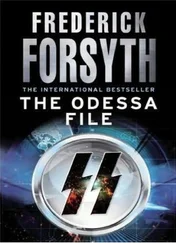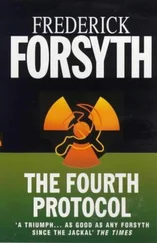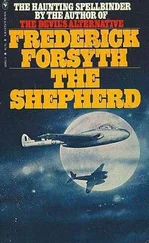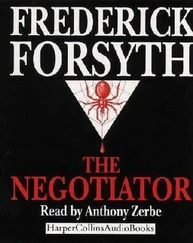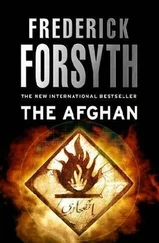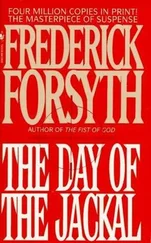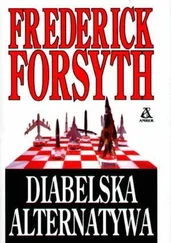The division chief Benny headed south also, but much faster. He flew El Al to Rome and changed planes there for Nairobi. Mossad has long had a particularly strong presence in Kenya, and Benny was met by the local head of station, in plainclothes and in a plain car. It had been a week since the Somali fisherman with the smelly kingfish had handed over his cargo to Opal, and Benny had to hope a motorcycle of some type had been acquired by then.
It was a Thursday, and that evening, close to midnight, the talk show The Night Owls was broadcast as usual. It was preceded by the weather report. This one mentioned that, despite a heat wave in most parts, there would be light rain over Ashkelon.
* * *
Full cooperation with the Tracker from the British was a foregone conclusion. The United Kingdom had sustained four murders by young fanatics seeking glory or paradise or both, inspired by the Preacher, and the authorities wanted him closed down as eagerly as the Americans did.
Tracker was lodged in one of the U.S. embassy’s safe houses, a small but well-appointed cottage down a cobbled mews in Mayfair. There was a brief meeting with the J-SOC chief of the defense staff at the embassy and with the CIA chief of station. Then he was taken to meet the Secret Intelligence Service at their HQ at Vauxhall Cross. Tracker had been in the green-and-sandstone pile by the Thames twice before, but the man he met was new to him.
Adrian Herbert was much the same age, mid-forties, so he had been at college when Boris Yeltsin terminated Soviet communism and the Soviet Union in 1991. He had been a fast-track entrant, after a degree in history at Lincoln College, Oxford, and a year at SOAS, the School of Oriental and African Studies in London. His specialty was Central Asia, and he spoke Urdu and Pashto, with some Arabic.
The boss of the SIS, often but wrongly called MI6, is always and only known as the Chief; he popped his head around the door to say hello and then left Adrian Herbert alone with his guests. Also present, as a courtesy, was a staffer from the Security Service, or MI5, at Thames House, five hundred yards down the river on its northern bank.
There was the almost ritual offering of coffee and biscuits, then Herbert glanced at his three American guests and murmured: “How do you think we can help?”
The two from the U.S. embassy left it to the Tracker. No one present was in ignorance of what the man from TOSA was charged with. Tracker saw no need to explain what he had done so far, how far he had got or what he intended to do next. Even between friends and allies, there is always need to know.
“The Preacher is not in Yemen, he’s in Somalia,” he said. “Exactly where he is lodged, I do not yet know. But we do know that his computer, and thus the source of his broadcasts, is in a warehouse-cum-bottling-plant in the port of Kismayo. I am pretty certain he is not there in person.”
“I believe Konrad Armitage told you we have no one in Kismayo,” said Herbert.
“It seems no one has,” the Tracker lied. “But that is not my quest here. We have established that someone is communicating with that warehouse and has received acknowledgment and thanks for his messages. The warehouse is owned by Masala Pickles, based in Karachi. You may have heard of it.”
Herbert nodded. He enjoyed Indian and Pakistani food and sometimes took his “assets” to curry restaurants on their visits to London. Masala mango chutney was well known.
“By an extraordinary coincidence, which we none of us believe in, Masala is wholly owned by Mr. Mustafa Dardari, who was a boyhood friend of the Preacher in Islamabad. I would like to have this man investigated.”
Herbert glanced at the man from MI5, who nodded.
“Should be possible,” the man murmured. “Does he live here?”
Tracker knew that although MI5 had representatives in the main foreign stations, their principal obligations were in the country. The SIS, although principally charged with foreign espionage and counterespionage against perceived enemies of Her Majesty abroad, also had the facility to mount an operation at home.
He also knew that, as with CIA and FBI in America, there had been periods when the rivalry between the internal and external secret services had led to animosity, but the common threat of Jihadist extremism, and its offspring terrorism, had for ten years led to a far greater degree of cooperation.
“He migrates,” said the Tracker. “He has a mansion in Karachi and a town house in London. Pelham Crescent. My information is that he is thirty-three, single, personable and a presence on the social map.”
“I may have met him,” said Herbert. “Private dinner, two years ago, hosted by a Pakistani diplomat. Very smooth, I seem to recall. And you want him watched?”
“I want him burgled,” said the Tracker. “I would like his pad bugged, sound and picture. But, most of all, I want his computer.”
Herbert glanced at Donald Firth, the man from 5.
“Joint op?” he suggested. Firth nodded.
“We have the facilities, of course. I’ll need the go from higher authority. Shouldn’t be a problem. Is he in town at the moment?”
“Don’t know,” said the Tracker.
“Well, not a problem to find out. And I presume the whole bun fight must be invisible and remain so?”
Yes, thought the Tracker, a very invisible bun fight indeed. It was agreed both services would get clearance for a very black operation with no sanction from any magistrate — in other words, totally illegal. But both British spooks were confident that with the Preacher’s trail of blood and death across the country, there would be no objection, right up to ministerial level if need be. The only political caveat would be the usual: Do what you feel you must, but I want to know nothing about it. Leading from the front, as ever.
As he was driven back to his mews cottage in the embassy car, the Tracker mused that there were now two possible routes to the exact location of the Preacher: One was Dardari’s personal desktop computer, if it could be tapped into. The other he was keeping up his sleeve for the moment.
* * *
It was just after dawn the next day, that the MV Malmö eased her way out of Gothenburg port and headed for the open sea. She was a 22,000-ton general-cargo freighter, what in the merchant shipping world is called handy-sized. The yellow-and-blue flag of Sweden fluttered from her stern.
She was a part of the considerable merchant fleet of Harry Andersson, among the last one-of-a-kind tycoons left in Sweden. Andersson had founded his shipping line many years ago with a single aged tramp steamer and had built the line to forty ships and made himself the biggest merchant marine tycoon in the country.
Despite the taxes, he had never relocated abroad; despite the fees, he had never adopted flags of convenience for his vessels. He had never “floated” except on the sea, never the stock exchange. He was sole owner of Andersson Line and, rare in Sweden, a billionaire in his own right. He had had two marriages and seven children, but only his youngest son, young enough to be his grandchild, was eager to become a mariner like his father.
The Malmö had a long trip ahead of her. She had a cargo of Volvo cars, destination Perth, Australia. On her bridge was Captain Stig Eklund; the first and second officers were Ukrainian and the chief engineer Polish. There were ten Filipino crew, including a cook, cabin steward and eight deckhands.
The only supernumerary was the cadet Ove Carlsson, studying for his merchant officer’s ticket and on his first long-distance voyage. He was just nineteen. Only two men on that ship knew who he really was: Capt. Eklund and the lad himself. The old tycoon was determined that if his youngest son was to go to sea on one of his ships, there would be neither bullying caused by resentment nor sycophancy from those seeking favor.
Читать дальше

